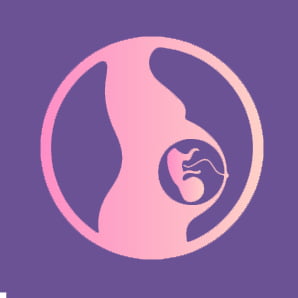Ovulation is the process in which the ovary releases a mature egg. After being released, the egg moves down the fallopian tube and remains there for a period ranging from 12 to 24 hours, during which it can be fertilized. Ovulation and fertility
Sperm can live inside a woman’s reproductive system for up to five days after intercourse under favorable conditions.
What are the signs of female fertility?
Answered in this video: When does ovulation occur? When is the fertile window? How do you know you ovulate? What are fertile awareness methods? How do you track your cycles? How do OPKs work? How do you use an ovulation predictor kit? What is basal body temperature? Do you need to check your progesterone after ovulation? What is a mid-luteal progesterone level? What is cervical mucus monitoring? What is type 4 cervical mucus? When should you time intercourse for conception? Should you have sex every day or every other day if you are trying to get pregnant? What is natural family planning or the calendar method?
The ovulation stage begins approximately 10-16 days before the start of the menstrual cycle, during which the ovary secretes the egg, and at that time signs of fertility appear in women and may not appear, but the absence of these signs does not indicate lack of fertility, and examples of such signs are as follows :
1. Ovulation pain
Some women feel pain in any part of the ovaries, and the side may differ every month, and this pain often occurs before or during ovulation, and in addition to the pain, the woman may feel a burning sensation, and this may be due to the bursting of the follicle that contains the mature egg and the release of fluids from it, and it may continue This pain may last for several minutes or longer for some women.
2. Overheating
The body temperature increases slightly during the first 24 hours of ovulation, and decreases to return to the way it was in the event that no fertilization of the egg occurred.
3. Cervical fluid change
Cervical fluid helps the sperm to move easily, and this fluid change is one of the signs of a woman’s fertility, as it becomes less viscous during the ovulation period. This change also helps to keep the sperm alive even after 5 days. It also lubricates the vagina to facilitate sexual intercourse.
4. Changes to saliva
Changes in saliva are one of the signs of a woman’s fertility, as crystals begin to form in the saliva due to the change in both the estrogen and progesterone hormones, but some factors contribute to covering up this change, such as: smoking, brushing teeth, or eating and drinking, so it becomes It is difficult to pay attention to such an indicator.
Other signs that may be associated with fertility in women
Signs of female fertility are not limited to what has been mentioned, but there may be other signs, such as:
1. A woman’s height
Many people believe that women of shorter height are more fertile, but research has found that women of average height have become more fertile over time. Bigger than long.
2. Breast size
Research has found that body shape is linked to the ratio of hormones and thus fertility, as both estradiol and progesterone hormones are elevated in a woman who has a larger breast size with a small waist compared to a woman who has a small breast size even if she has a small waist.
3. The sound
A link has been found between the voice and fertility, as the voice increases its basic frequency and becomes more attractive before ovulation, and it has been found that the frequency of the sound varies during the menstrual cycle.
Misconceptions about female fertility
After finishing talking about the symptoms of female fertility, we will move on to talking about some misconceptions about fertility, such as:
Stress affects fertility Ovulation
Stress may increase when unable to have children, but there is no scientific evidence confirming the effect of stress on fertility, but indirectly, stress helps reduce the couple’s desire to have children.
The quality of food works to lower fertility
There is no scientific link between the quality of food and fertility in a woman, but in all cases it is necessary to stay away from everything that is unhealthy and focus and adhere to a healthy diet in order to have a better life.
Smoking cessation is only necessary when pregnant
There is a prevailing belief in the importance of stopping smoking only when pregnant, but this is not true, as smoking in general may affect the stock of ovaries, in addition to increasing the risk of ectopic pregnancy, so stopping it is necessary in all cases and not only in cases of pregnancy.
Increasing the age of 35 only reduces the fertility rate
Incorrectly, it is believed that the chance of childbearing and fertility in general decreases only after the age of 35, but this is not true, as every girl is born with a specific ovulation stock that begins to decline in the mid-twenties and decreases further after the mid-thirties, and the chance of childbearing and fertility generally decreases in the mid-forties.
